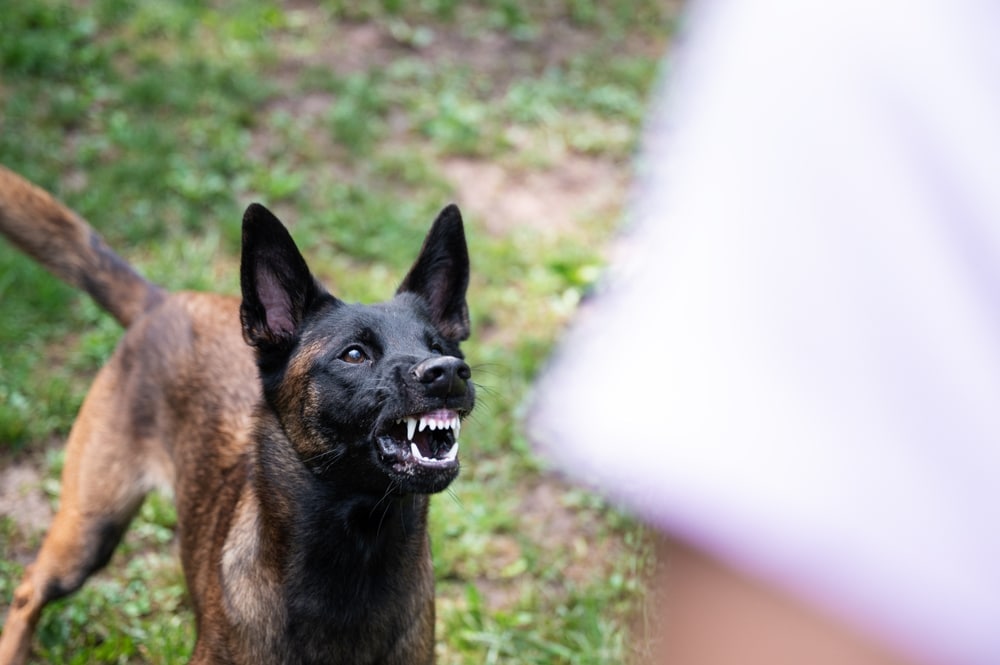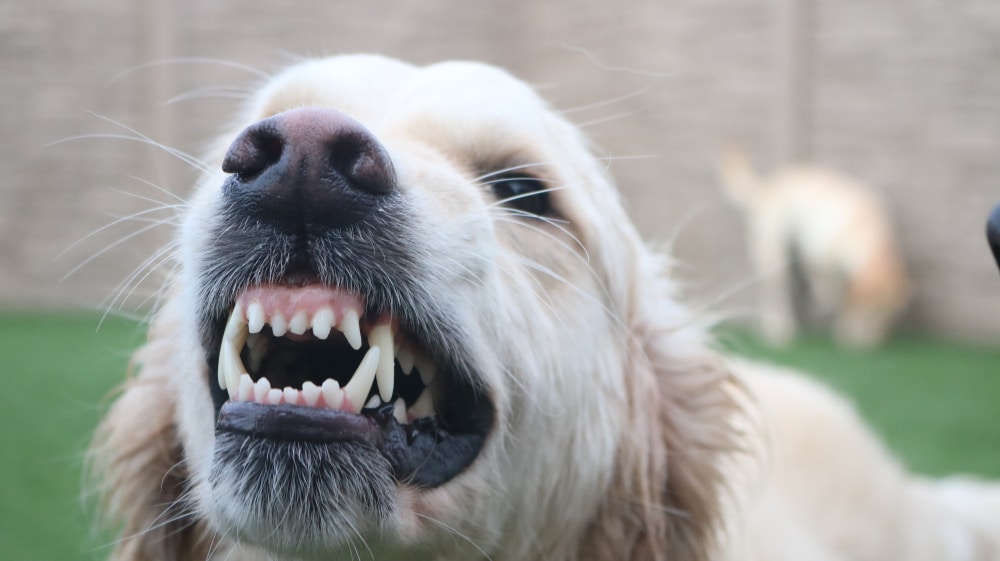If a dog growls at you, it may be a sign of fear, aggression, or protection. Knowing how to handle the situation is essential for everyone’s safety. So, what should you do if a dog growls at you?
Remember to stay calm and move away slowly when dealing with a growling dog. Don’t make sudden movements that could startle the animal. Speak softly, avoid direct eye contact, and give the pup plenty of room to feel safe. Call for help if you sense danger.
Table of Contents
Reasons Why A Dog May Growl At You
Understanding the cause behind the growling is essential to address the situation and ensure everyone’s safety adequately. There are a variety of reasons why a dog may growl at you.
Fear Or Anxiety
A dog may growl at you out of fear or anxiety. Fear-based growling is often a sign that the dog feels unsafe or threatened in some way and can be a natural response when faced with something unknown or unfamiliar.
For example, the dog may have had past negative experiences that have caused them to feel scared.
Protective Instincts
The protective instinct is among the most common reasons a dog may growl at you. Dogs are naturally protective of their family, space, and possessions and will use growling as a warning sign to show they are feeling threatened.
This could be triggered if somebody approaches their food bowl while eating.
Territorialism
This behavior occurs when a dog perceives a foreign presence as a threat to its territory, which can cause it to become anxious and defensive. As a result, it may resort to growling to protect what it perceives as its own.
Pain
If your dog is growling at you, it could be because it is in pain or discomfort and trying to communicate this to you. This can be very concerning and worrying for a pet owner.
How To Deal With A Growling Dog

There are the following steps to take when your dog growls at you.
Remain Calm And Speak Softly
Remaining calm and speaking softly to a growling dog is the best way to de-escalate any potential aggression. It is important to remember that dogs are susceptible to body language, facial expressions, and vocal tones.
Speak in a low voice, as loud noises can make a dog more defensive or scared. Take extra caution if the dog has a history of aggression.
If you remain calm and speak in a soothing voice, you can help reduce the dog’s level of aggression in your dog.
Avoid Direct Eye Contact
When dealing with a growling dog, it is essential to remember that the dog may be feeling threatened. The most important thing you can do for a growling dog is to avoid making direct eye contact.
Direct eye contact with a dog can be decoded as a challenge and provoke an attack if the dog continues to growl.
Move Slowly And Respectfully Away From The Dog
When encountering a growling dog, moving slowly and respectfully away from the dog is essential. Remain calm and avoid sudden movements or gestures that could aggravate the situation.
If The Situation Is Still Unsafe, Call For Assistance
If your dog continues growling at you after following the above steps, you should call for help.
You can contact a specialized dog trainer or a skilled veterinarian.
A dog trainer or animal behaviorist may be able to provide solutions and strategies that can help your dog overcome its anxiety and aggression.
What To Do After the Dog Stops Growling
Once the dog has stopped growling, it is important to determine what triggered the behavior and take steps to prevent similar incidents in the future, such as the following.
Give The Dog Some Time Alone And Respect Its Boundaries
When a dog growls, taking a step back and giving the pup some time alone is essential. Though trying and comforting the dog can be tempting, respecting the dog’s boundaries is best. If it’s displaying aggressive or defensive behaviors, its stress levels are high, and it needs space.
Take a few moments to assess the situation from afar. Is there something in particular that’s upsetting the pup? Kids playing too rough, another pet joining in on their territory, or maybe a stranger who got too close for comfort, for example?
Once you’ve identified what set off this behavior, ensure it’s addressed and resolved before attempting to interact with your pup again.
Establish A Routine And Practice Desensitization
Routine helps to create a sense of security and comfort for your dog. A routine allows it to know what is expected of it and reduces stress levels, ultimately reducing aggression occurrences.
Desensitization is slowly exposing the dog to potential triggers in a controlled environment to help them become more comfortable with those specific stimuli. This is best done with the help of a qualified trainer or behaviorist.
Reward The Dog With Positive Reinforcement For Showing Good Behavior
After the dog stops growling, rewarding the animal with positive reinforcement for its good behavior is important.
This can be done by giving them verbal praise, a tasty treat, or a favorite toy. Positive reinforcement helps the pet understand their behavior is desired and expected in the household.
In addition to verbal praise and treats, physical affection can be rewarded. Petting or cuddling your dog will give them a sense of security and help reinforce the positive emotions associated with their good behaviors.
In Conclusion: What To Do If A Dog Growls At You?
Growling can be a scary and intimidating experience, but it is important to remember that dogs use this behavior as a form of communication. By remaining calm and speaking gently, avoiding direct eye contact, moving away from the animal respectfully, and rewarding it with positive reinforcement for good behavior afterward, you can help your dog feel more secure in its environment.
With patience and understanding on both sides, growling doesn’t have to mean an aggressive situation between you and your dog. If the situation becomes unsafe or if your pup’s growls are persistent, then seek professional assistance right away.
So, have you experienced this situation before? Are you worried you will? Let us know what’s going on in the comments below.
